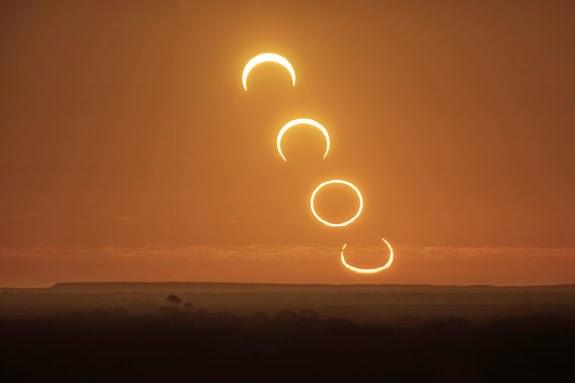The sun will look like a ring of fire above some remote parts of the world next Tuesday (April 29) during a solar eclipse, but most people around the world won't get a chance to see it.
Whereas lunar eclipses occur only when there's a full moon, and solar eclipses only happen during a new moon. Half the world saw a lunar eclipse during the full moon on April 15. When a lunar eclipse occurs, it usually means there is also a solar eclipse at the preceding or following new moon.
Tuesday's solar eclipse is known as an "annular" — rather than "total" — lunar eclipse. That’s because Tuesday's eclipse will occur when the moon is close to its farthest distance from the Earth, making it too small to cover the sun completely. The resulting effect looks like a ring of fire, called an “annulus,” appears around the silhouette of the moon. ['Ring of Fire' Annular Solar Eclipse of April 29, 2014 (Visibility Maps)]
But most people won't see the whole eclipse. The only place in the world where this annular eclipse will be visible is a small area in Antarctica. However, partial phases of the eclipse will be visible in other places. Most of those areas are in the ocean — rarely traveled ocean, in fact — but the entire continent of Australia will get a good view.
Space.com: Solar Eclipse Will Transform Sun into 'Ring of Fire' Next Week, Geoff Gaherty

Comments